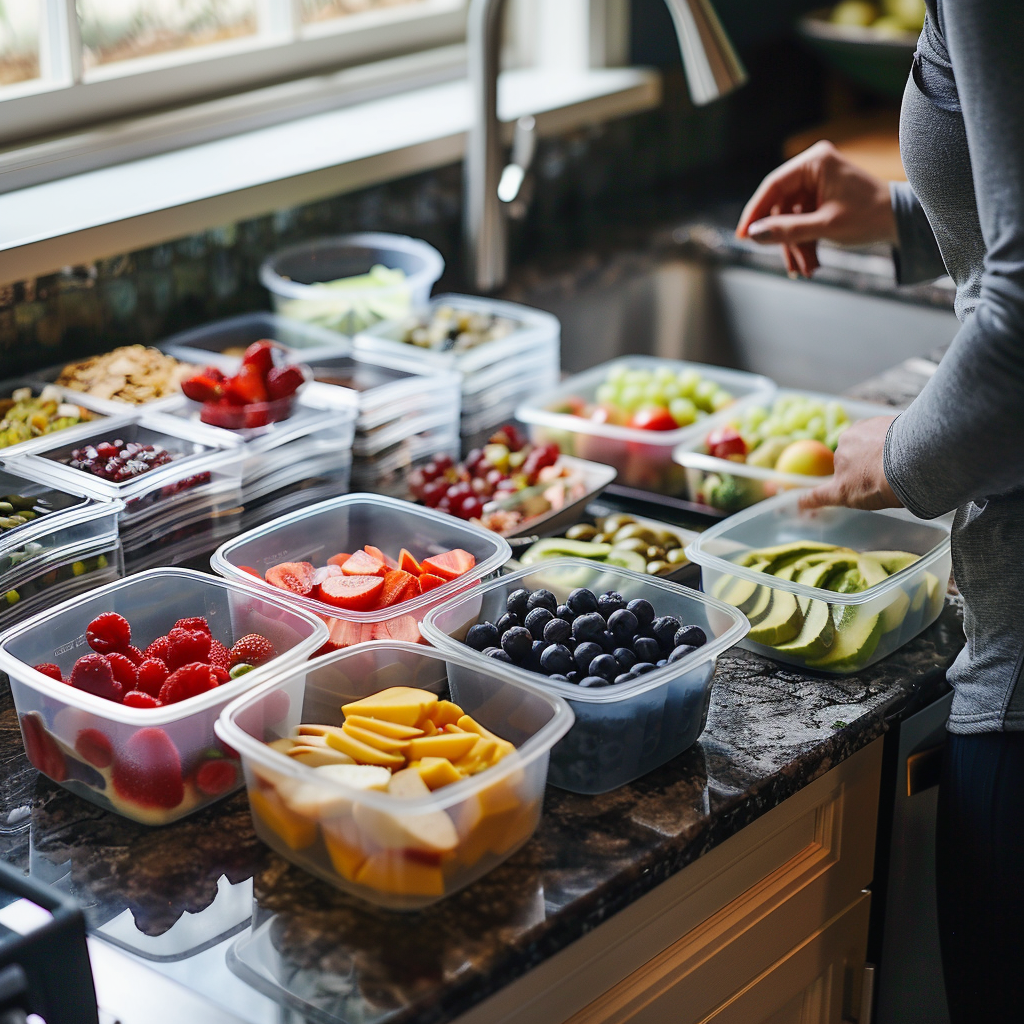1. Start Small: Focus on One Change at a Time
One of the biggest mistakes people make when transitioning to a healthier diet is trying to overhaul everything all at once. This can lead to frustration and burnout. Instead, focus on one change at a time.
-
Choose one area to improve: For example, start by drinking more water, adding more vegetables to your meals, or cutting back on sugary snacks. By focusing on one aspect of your diet, you give yourself time to adapt.
-
Celebrate small victories: Each positive change, no matter how small, is a step in the right direction. Take time to acknowledge and celebrate your progress.
-
Create long-term habits: The key to lasting change is consistency. By making small, gradual improvements, you’re more likely to develop habits that stick.
2. Plan Your Meals, but Keep It Simple
Meal planning is a great way to stay on track with a healthier diet, but it doesn’t have to be complicated. Start by planning just a few meals each week, focusing on simple, nutritious recipes that you enjoy.
-
Pick a few go-to meals: Choose easy-to-make meals that you know you’ll like. For example, try a healthy stir-fry, salads with lean protein, or overnight oats for breakfast.
-
Prep ingredients in advance: To make things even easier, chop vegetables, cook grains, or prepare protein sources ahead of time so they’re ready to go during the week.
-
Be flexible: If you’re not able to stick to your meal plan perfectly, don’t stress. Having a general outline of your meals is enough to help guide healthier choices.
3. Swap, Don’t Restrict
Restricting entire food groups or foods you love can make transitioning to a healthier diet feel like a punishment. Instead, focus on swapping less healthy options for healthier alternatives.
-
Swap refined grains for whole grains: Instead of white rice or white bread, try brown rice, quinoa, or whole grain bread. These options are more nutrient-dense and will keep you fuller for longer.
-
Replace sugary snacks with fruit or nuts: If you have a sweet tooth, swap candy or cookies for fresh fruit or a small handful of nuts. This way, you still satisfy your craving while choosing a more nutritious option.
-
Experiment with plant-based options: If you’re looking to reduce your intake of processed meats or dairy, try plant-based proteins like tofu, lentils, or chickpeas. You can even experiment with plant-based milk alternatives, like almond or oat milk.
4. Stay Mindful of Portion Sizes
Even when eating healthier foods, portion sizes matter. Overeating healthy foods can still lead to excess calorie intake, which can undermine your goals. The key is to practice mindful eating.
-
Listen to your body: Eat when you’re hungry and stop when you’re satisfied. Pay attention to your body’s cues rather than eating out of habit or boredom.
-
Use smaller plates: A simple trick to managing portions is to use smaller plates and bowls. This can help prevent overeating and give you a better sense of portion control.
-
Eat slowly and enjoy: Take your time when eating, savor each bite, and enjoy your meal. This can help you feel more satisfied with smaller portions and avoid mindless eating.
5. Focus on Nutrient-Dense Foods
To make the most of your meals, focus on foods that are packed with nutrients but relatively low in calories. These nutrient-dense foods will help fuel your body with vitamins, minerals, and energy.
-
Fill your plate with veggies: Vegetables are nutrient powerhouses and should make up a large portion of your meals. Aim to fill half your plate with colorful vegetables at lunch and dinner.
-
Incorporate lean protein: Protein is essential for keeping you full and supporting muscle repair. Choose lean sources like chicken, turkey, fish, or plant-based proteins like beans and legumes.
-
Include healthy fats: Don’t shy away from healthy fats like those found in avocados, olive oil, nuts, and seeds. They help keep you full and provide essential fatty acids.
6. Practice Patience and Self-Compassion
Transitioning to a healthier diet is a journey, not a sprint. It’s natural to face setbacks, especially when life gets busy or stressful. Practicing self-compassion and patience can help you stay on track.
-
Don’t aim for perfection: It’s okay to have a less-than-healthy meal now and then. What matters is your overall pattern of eating, not one meal or one day.
-
Be kind to yourself: If you slip up or feel like you’ve fallen off track, avoid being overly critical. Instead, recognize that setbacks are part of the process and get back on track without guilt.
-
Take it one step at a time: Remember that you don’t need to make drastic changes overnight. Focus on making one positive change at a time, and soon enough, those small changes will add up to a healthier lifestyle.
Conclusion: Small Steps Lead to Big Changes
Transitioning to a healthier diet doesn’t have to be overwhelming. By starting small, planning your meals, and making smart swaps, you can create sustainable eating habits that work for your lifestyle. The key is consistency, mindfulness, and self-compassion. Over time, these changes will lead to lasting health benefits, without the stress of drastic diet overhauls.












